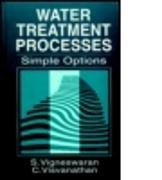Read more
Water Treatment Processes: Simple Options bridges the gap in the existing literature by emphasizing low-cost and simple treatment technologies as well as the conventional options. The appropriateness and the economy of the technology must be an integral part of the selection process. This book emphasizes application of the methods and outlines their design criteria in a simplified manner. The authors discuss in detail process modifications and upgrading of conventional treatment facilities. The first two chapters introduce the water quantity and quality requirements and outline both conventional and advanced water treatment processes. The subsequent six chapters extensively discuss the six unit processes in drinking water treatment. Emphasis is given to low-cost methods that can be successfully applied in developing countries.
List of contents
Water Quality and QuantityIntroductionWater QuantityWater QualityExamplesReferencesWater Sources and Treatment TechnologiesIntroductionConventional Water Treatment ProcessesAdvanced ProcessesMembrane ProcessesConclusionReferencesRapid MixingIntroductionHydraulic MixersMechanical MixersRelative Merits of Rapid Mixing TechniquesConclusionsExamplesReferencesFlocculationIntroductionHydraulic Type FlocculatorsExamplesReferencesSedimentationIntroductionConventional Sedimentation TanksTube SettlersSludge Blanket ClarifiersExamplesReferencesFiltrationIntroductionSlow Sand FilterSimple Filtration and Treatment FacilitiesRapid FiltersDirect FiltrationExamplesReferencesWater Treatment for Specific Impurities RemovalIron and Manganese RemovalDefluoridationExamplesReferencesDisinfectionIntroductionChlorinationAlternative DisinfectantsConclusionExamplesReferences
About the author
Vigneswaran\, S.; Visvanathan\, C.
Summary
Water Treatment Processes: Simple Options bridges the gap in the existing literature by emphasizing low-cost and simple treatment technologies as well as the conventional options. The appropriateness and the economy of the technology must be an integral part of the selection process. This book emphasizes application of the methods and outlines their design criteria in a simplified manner. The authors discuss in detail process modifications and upgrading of conventional treatment facilities. The first two chapters introduce the water quantity and quality requirements and outline both conventional and advanced water treatment processes. The subsequent six chapters extensively discuss the six unit processes in drinking water treatment. Emphasis is given to low-cost methods that can be successfully applied in developing countries.

